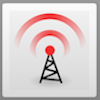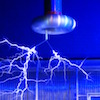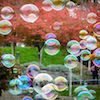
Spotlight on Leon Lederman, 1922–2018
Leon Lederman was one of the great physicists, perhaps the foremost, of the late 20th and early 21st centuries. To Fermilab and to QuarkNet, he was that great physicist up close and personal, a unique, eminently likable character with a great sense of humor and enthusiasm. In this Spotlight, we'd like to give you a few resources and insights.
To get an overview of Leon's life and work, we recommend obituary notices from Fermilab, CERN, The New York Times, and Brookhaven Lab. Then, his physics; we can only point to a few highlights here. To learn more about the Nobel Prize Leon earned with Jack Steinberger and Melvin Schwartz in 1988 for the 1962 discovery of the muon neutrino, you can read an overview in Physics and the text of Leon's Nobel Prize lecture. Leon and colleagues went on to seach for a third-generation quark, resulting in the discovery of the b-quark at Fermilab in 1977.
Leon Lederman cared deeply about physics education. He initiated the famous Saturday Morning Physics program at Fermilab and founded both the Ilinois Mathematics and Science Academy (IMSA) in 1986 as well as the Physics First movement. Read his 2007 Physics Today article promoting Physics First. Leon gave several talks to QuarkNet teachers in the Lead Teacher Institutes, precursors to our current Data Camp. Among the staff, it became clear that the best approach was to not tie him to a topic but just go with whatever he and the teachers decided to talk about. We called it, "Let Leon be Leon." They were hugely successful and always fun. Deborah Roudebush said of attending such a talk when she was a lead teacher, "Leon gave a lecture which was charming and informative. He reminded me of a leprechaun! He then patiently signed books for us."
Caught at the CERN Restaurant 1 and asked about Leon, theorist John Ellis offered, "Leon Lederman is justly famous for his many ground-breaking experiments. He is also famous for having baptized the Higgs boson as the 'God Particle,' thereby stimulating public awareness and elevating its discovery to a cultural phenomenon."
Spotlight Extra: QuarkNet Spokesperson Marge Bardeen on Leon Lederman and QuarkNet
Leon Lederman was more than a research scientist. He had a passion for science education, understanding that educators could use help responding to the call for enhancing science education in the 1983 national report, A Nation at Risk. There was a direct link from Leon’s vision of how Fermilab could bring particle physics to high school teachers and QuarkNet! All three components of the QuarkNet program—research internships, research-scenario workshops and follow-on teacher alliances—were elements of Fermilab’s teacher program. We put them together within the context of particle physics research across the country, and QuarkNet was born. Perhaps most important, Leon was a people-person who recognized the importance of talking with an audience and building relationships. We took that to heart, creating long-term opportunities for physicists and teachers to collaborate.
Thanks to everyone, QuarkNet has stood the test of time with hundreds of teachers participating each year. Steadfast mentors welcome teachers and some of their students into research groups and host events at universities and labs. Leon’s legacy spreads beyond QuarkNet, but we are proud that he was our Godfather!

News from QuarkNet Central
Mentors and center leaders: Please submit your annual report by the middle of October. Reports should be submitted in your center group on the QuarkNet website. Not sure how to submit? We have how-to instructions.
A new International Masterclasses circular is available. It is all about World Wide Data Day on November 15. Registration is open! Send questions to Ken!
Dark Matter Day is coming! Will your QuarkNet center participate?

Physics Experiment Roundup
What is more super than super? How about the new neutrino detector set for construction in Japan, Hyper-Kamiokande, as featured in Physics Today? Perhaps Hyper-K can shed (Cerenkov) light on the Scientific American report of puzzling particles found by the ANITA experiment. (Hat tip to Rebekah Randall of the Notre Dame center.)

Resources
The 2018 Nobel Prize in Physics was awarded last week—half jointly to Gerard Mourou and Donna Strickland and half to Arthur Askin. Donna becomes the third woman to be awarded a Nobel Prize in physics. We know the first: Marie Curie. But what about the second? Read about Marie Goeppert Mayer in Physics Today. On the subject of women and men doing great physics, symmetry asks, "Where are they now?" about members of the teams that discovered the Higgs.

Just for Fun
True particle physics urban legends: the Oops-Leon particle, explained in Wikipedia, and the Penguin Diagram, expounded upon in symmetry. And then there is this handy guide to curve-fitting from xkcd.
QuarkNet Staff:
Mark Adams: adams@fnal.gov
Ken Cecire: kcecire@nd.edu
Shane Wood: swood5@nd.edu